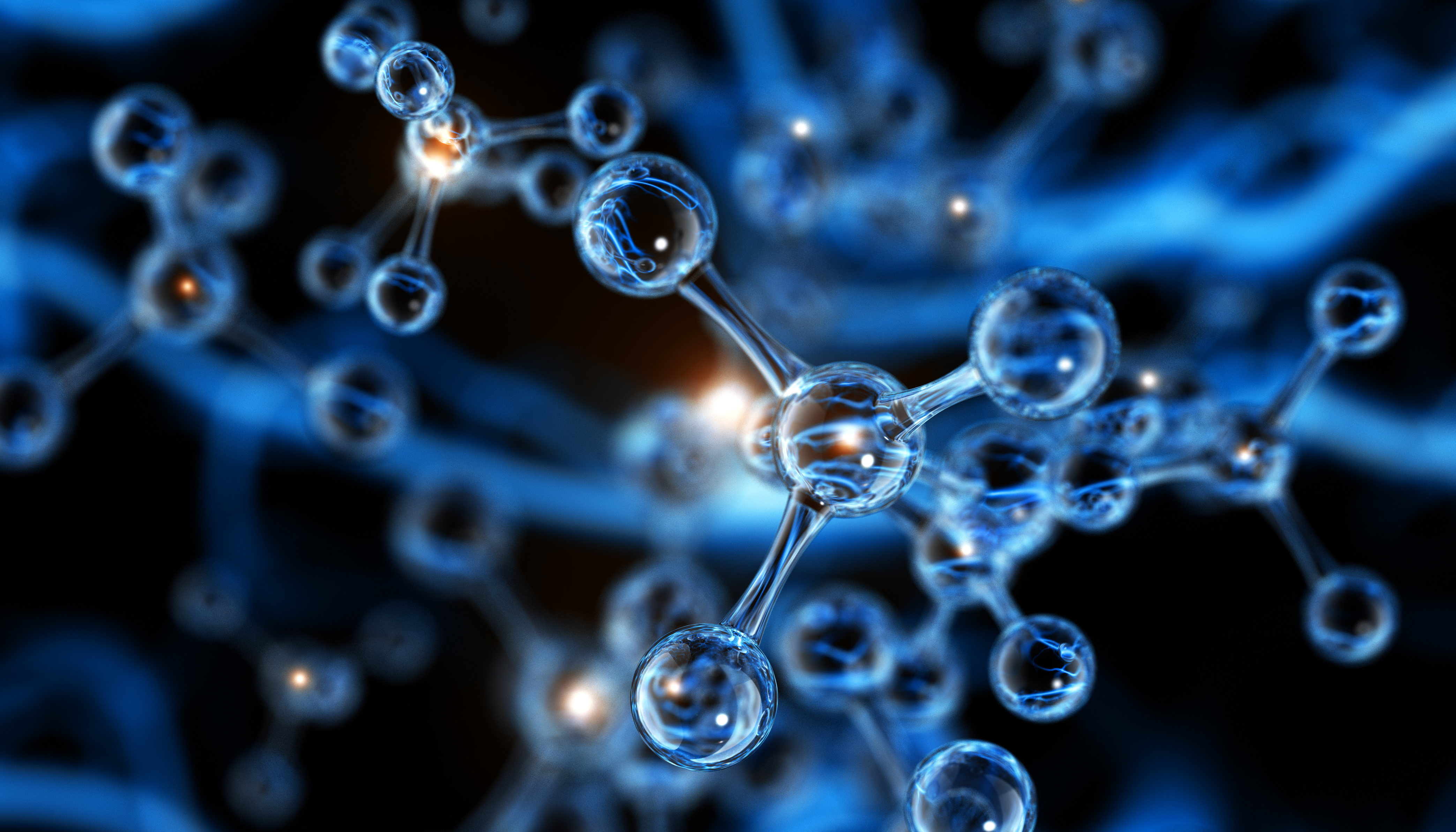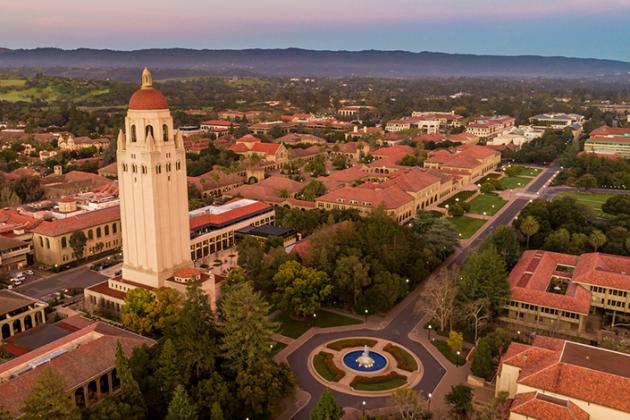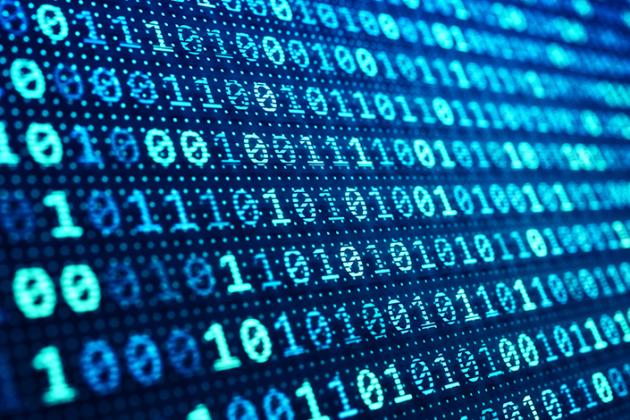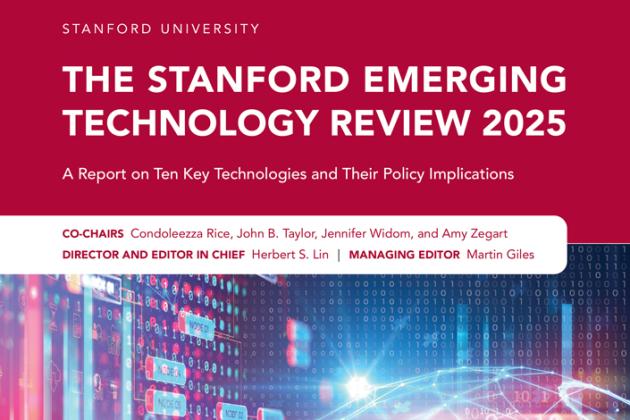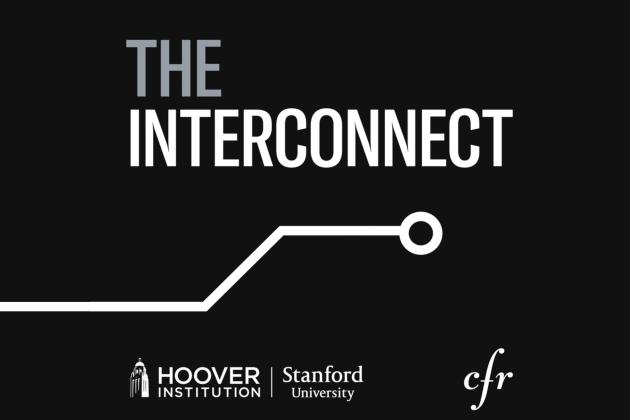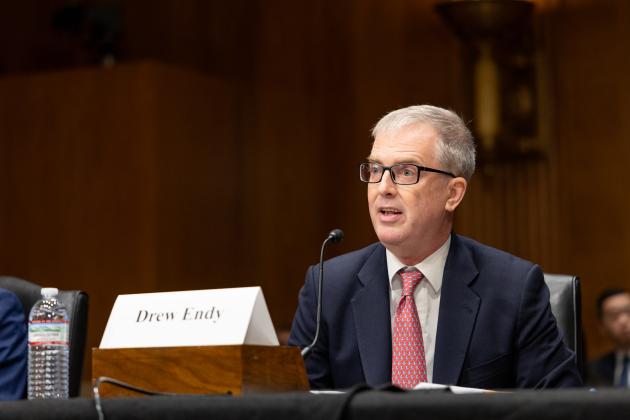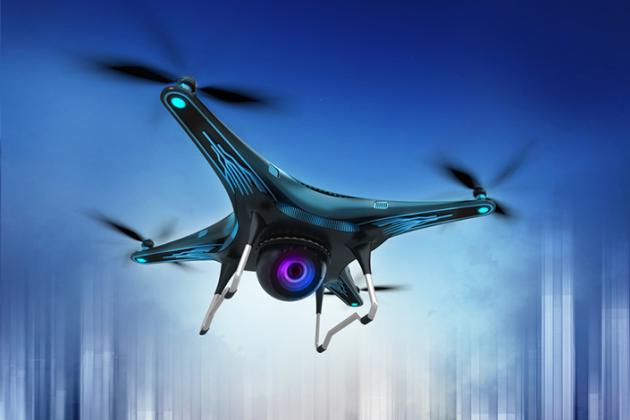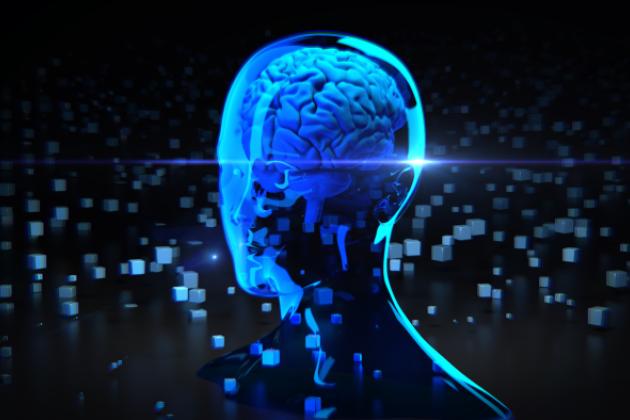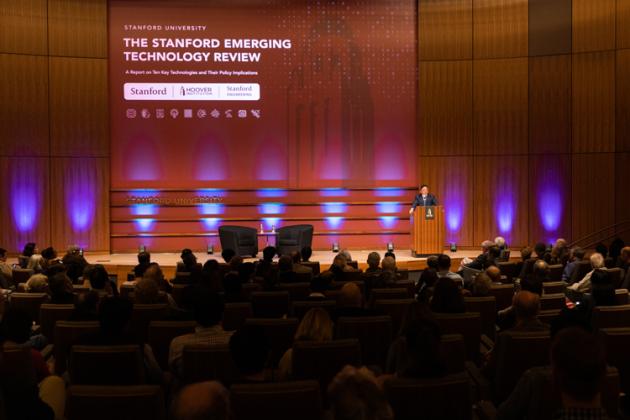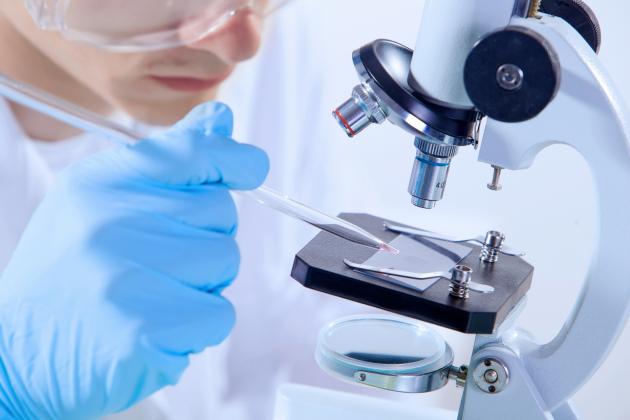This excerpt from the new issue of the Stanford Emerging Technology Review (SETR) focuses on biotechnology and synthetic biology, one of ten key technologies studied in this continuing educational initiative. SETR, a project of the Hoover Institution and the Stanford School of Engineering, harnesses the expertise of Stanford University’s leading science and engineering faculty to create an easy-to-use reference tool for policy makers. Download the full report here and subscribe here for news and updates.
Biotechnology is the use of cellular and biomolecular processes to develop products or services. Synthetic biology is a subset of biotechnology that involves using engineering tools to modify or create biological functions—like creating a bacterium that can glow in the presence of explosives. Synthetic biology is what created the COVID-19 mRNA vaccine in record time—although it relied on decades of earlier research. Just as rockets enabled humans to overcome the constraints of gravity to explore the universe, synthetic biology is enabling humans to overcome the constraints of lineage to develop new living organisms.
Biotechnology is poised to emerge as a general-purpose technology by which anything bioengineers learn to encode in DNA can be grown whenever and wherever needed—essentially enabling the production of a wide range of products through biological processes across multiple sectors.
The US government is still working to grasp the scale of this bio-opportunity and has relied too heavily on private-sector investment to support the foundational technology innovation needed to unlock and sustain progress. Biotechnology is one of the most important areas of technological competition between the United States and China, and China is investing considerably more resources. Lacking equivalent efforts domestically, the United States runs the risk of Sputnik-like strategic surprises in biotechnology.
Biology blooms
Biotechnology involves using living systems and organisms to develop or make products and solve problems. First-generation biotechnology arose over millennia and involved the domestication and selective breeding of plants and animals for agriculture, food production, companionship, and other purposes.
Second-generation biotechnology was launched a half century ago with the invention of recombinant DNA and has since encompassed techniques such as genetic engineering, polymerase chain reaction (PCR), high-throughput DNA sequencing, and CRISPR gene-editing technology. Both breeding and editing approaches continue to advance, creating and using ever better tools for sculpting and editing living systems.
Biotechnology products and services realized through breeding and editing are already widely deployed. A 2020 National Academies of Sciences, Engineering, and Medicine report valued the US bioeconomy at around 5 percent of GDP, or more than $950 billion annually. Existing applications involve primarily agriculture, medicines, and industrial materials.
Biology, as a natural manufacturing process, is remarkably distributed and localized. For example, leaves on trees do not come from factories or central facilities; rather, they grow on trees themselves—all over the place. Yet, outside of agriculture, biotechnology has until now been largely practiced and commercialized in a capital-intensive, industrialized, and centralized context. This contrast between biology as a naturally distributed platform and industrialized biomanufacturing processes suggests that biotechnology may be ripe for new modes of practice and products.
Notably, synthetic biology continues to emerge as an important new approach within biotechnology. Synthetic biology combines principles from biology, engineering, and computer science to modify living systems and construct new ones by developing novel biological functions such as custom metabolic or genetic networks, novel amino acids and proteins, and even entire cells. Synthetic biology thus helps us to create more complex, biologically based systems, including those with functions that do not exist in nature.
Two glimpses into the future
• There is no natural cell on Earth that is fully understood. Even for well-studied model organisms like E. coli, there remain genes with unknown or incompletely understood functions, highlighting the complexity of cellular systems. Our collective ignorance means that all bioengineering workflows remain Edisonian at the cellular scale—we are tinkering and testing. By contrast, the routinization of bioengineering workflows at the cellular scale sufficient to realize “design, build, work” workflows—a hallmark of all other modern technologies that implies doing a relatively small amount of empirical work primarily to validate the analysis underlying the construction of a biological artifact—remains fringe foundational research. Such bioengineering workflows remain in their earliest stages.
Nevertheless, because cells are the fundamental unit of life, researchers and start-ups across the United States, Europe, Japan, and China are scrambling to learn how to build fully understandable cells from scratch. The ability to construct life for the first time, without being restricted to any terrestrial lineage, is akin to launching into orbit the first artificial satellite.
• Carbon is central to life. Currently, we rely on photosynthesis for production of organic carbon molecules. Recent thinking, however, suggests that electricity could be used to fix carbon directly from the air to create organic molecules that could be fed to microbes—a process that may come to be known as electrobiosynthesis or, more simply, “eBio”—and that doing so could be an order of magnitude more efficient from a land-use perspective than traditional agriculture.
Although eBio is still a very immature technology, its potential significance and impacts are hard to overstate. For example, surplus power from large-scale renewable energy generation could be used to directly produce biomolecules such as proteins and cellulose without requiring massive conventional battery banks to store energy that cannot be used immediately. The development of eBio could also enable bioproduction in places where soils are poor, water is scarce, or climate and weather are too uncertain. And it could raise the ceiling on how much humanity could make in partnership with biology.
Risks and concerns
New organisms not found in nature raise concerns about how they will interact with natural and human environments. For instance, bioengineered organisms that escape into the environment and possibly disrupt local food chains or natural species have long been a concern. Moreover, as the science and technology of synthetic biology becomes increasingly available to state and nonstate entities, there are legitimate concerns that malicious actors will create organisms harmful to people and the environment.
Ethical considerations also exist. Religious traditions may have different stances toward life and whether the engineering of new life forms violates any of their basic precepts. Often classified as potential non-physical impacts, the effects on biotechnology when considering these religious concerns are sometimes difficult to predict in advance. In the words of a Wilson Center report on this topic, such concerns involve “the possibility of harm to deeply held (if sometimes hard to articulate) views about what is right or good, including . . . the appropriate relationship of humans to themselves and the natural world.”
One overall challenge for policy makers—and the biotechnology community—is to preserve and advance the very significant public benefits of research into biosciences and biotechnology while minimizing the real and perceived risks associated with potential misuse of the resulting knowledge and capacities. For example, in response to the concern about the escape of harmful bioengineered organisms into the environment, synthetic biology itself offers the possibility of bioengineering organisms from scratch that are incapable of escaping or evolving. But it is a matter of policy to ensure that necessary safeguards are included in projects intended to create new organisms.
Policy makers will have to be aware of—and able to navigate—issues and aspects of emerging biotechnologies, such as the ones included in this section, if they are to help guide the development of the field and the increasing diversity of the biotechnologies that emerge from it.

Drew Endy
Associate Professor of BioengineeringDrew Endy is the Martin Family University Fellow in Undergraduate Education (bioengineering), codirector of degree programs for the Hasso Plattner Institute of Design (the d.school), core faculty at the Center for International Security and Cooperation (CISAC), and senior fellow (courtesy) of the Hoover Institution at Stanford University. He serves as president and director of the Biobricks Foundation and director of the iGEM Foundation and the Biobuilder Educational Foundation. His research focuses on the foundations of synthetic biology along with broader societal aspects. He earned a PhD in biotechnology and biochemical engineering from Dartmouth College.

